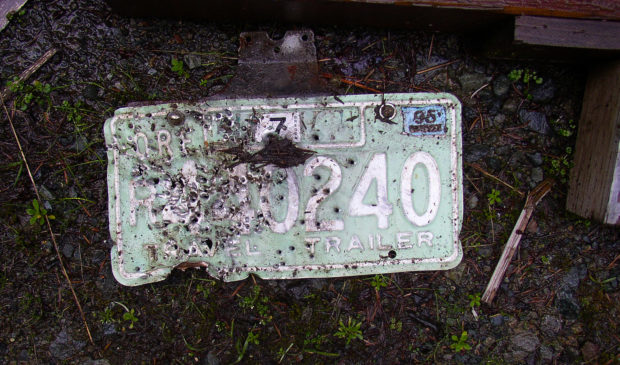Environmental Commission calls for investigation into hidden junkyards
Friday, May 19, 2017 by
Joseph Caterine In the same way that it’s hard to pinpoint how many pieces of garbage it takes to make a heap, the Environmental Commission deliberated Wednesday night how many instances of localized dumping in the city would amount to a serious problem.
Several residents from Ebony Acres in East Austin, off the northwest side of Givens Park, have complained recently to the Watershed Protection Department that trash scattered around the area has gotten out of hand. The number of properties facing allegations of containing excess rubbish prompted Oscar Garza and Chuck Lesniak with the Watershed Protection Department to give a presentation to the commission.
The woods around Grant Street, south of East 12th Street and north of Pennsylvania Avenue, are heavily vegetated, with no walkable trails or foot traffic, making it an ideal spot for dumping unwanted garbage. Lesniak explained in these types of cases the debris is often dropped off by by individuals or small-time hauling contractors. Some of the waste may also be historical.
“Until 30 years ago this was a relatively rural area,” Lesniak said at the meeting. “A lot of the streets weren’t even paved.” Back then, many Ebony Acres residents did not have access to a waste disposal service, so they had to find alternative means.
“As the city has grown,” Garza said, “we’re getting into the areas that used to be outside city limits.”
Trash comes in all shapes and sizes. During a walk-through, Garza found roof shingles, discarded carpet and broken glass at 3601 Grant St., and various old appliances along the Givens Park border. Darren Newby, owner of 3508 and 3600 Pennsylvania Ave., keeps a collection of cars on the property that has raised environmental concerns with some of his neighbors.
The city’s Code Department has an open case on Newby, but it is unclear as of now whether or not the cars are leaking any contaminants into the ground or nearby Tannehill Branch Creek. When it comes to waste on private property that does not pose an immediate water quality or public safety threat, there is little the city can do to enforce a cleanup, Lesniak said.
The city works with the Texas Commission on Environmental Quality to make sure property owners around town are not dumping pollutants, and it also has strong landfill regulations for maintaining city-owned property. “We’ve got probably the best environmental complaint investigation program in the state, and as far as municipalities probably one of the best in the country,” Lesniak said.
Despite the Watershed Protection Department’s waste mitigation programs, including the East Austin Environmental Initiative, which the city launched in response to the ’90s tank farm controversy, non-hazardous garbage on private property is out of their reach. With no way to enforce clearing this material, Lesniak said that local dumping is not just an Ebony Acres problem, but an Austin problem.
“What is the city doing proactively to identify areas where local dumping is happening?” asked Chair Marisa Perales.
“We’re not doing anything proactively,” Lesniak said. “(If people) find something they come to us.”
Similar to how the city diagnoses localized flooding issues, the city relies on citizen complaints, through 3-1-1 or the 24-hour pollution hotline, to figure out where the garbage buildups are happening.
While Lesniak asserted the excellence of the city’s response, some commissioners were skeptical.
“It could very well be that you are handling the complaints well and that’s why we don’t hear about them,” Perales said, “but it could also be that there are communities that don’t have the time and energy to bring these to our attention.”
“My experience using that (pollution) hotline was negative,” Commissioner Linda Guerrero said. “But I’m glad you’ve had successes.”
Guerrero requested ongoing communication and tracking of the cleanup in the Givens Park area, and Commissioner Andrew Creel requested that staff return to provide more data on how big a problem local dumping really is. Other commissioners echoed their requests, and staff confirmed they would look into it, but no formal action was taken.
Photo by the Bureau of Land Management made available through Creative Commons.
The Austin Monitor’s work is made possible by donations from the community. Though our reporting covers donors from time to time, we are careful to keep business and editorial efforts separate while maintaining transparency. A complete list of donors is available here, and our code of ethics is explained here.
You're a community leader
And we’re honored you look to us for serious, in-depth news. You know a strong community needs local and dedicated watchdog reporting. We’re here for you and that won’t change. Now will you take the powerful next step and support our nonprofit news organization?



